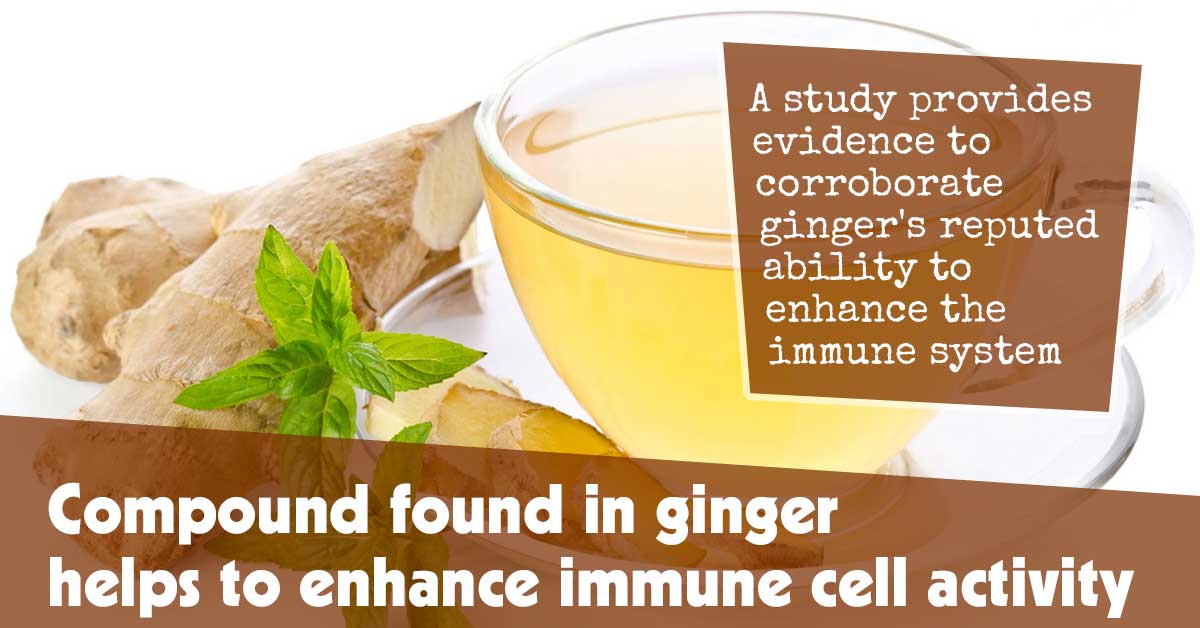Ginger is a pungent, fragrant spice that has been used in traditional medicine for centuries. A study provides evidence to corroborate ginger’s reputed ability to enhance the immune system.1✅ JOURNAL REFERENCE DOI: 10.1002/mnfr.202200434
Laboratory tests demonstrate that even small doses of a potent component of ginger can trigger white blood cells to become more responsive.
The research further reveals that this effect is mediated by a receptor type that is involved in pain stimuli perception from heat and also the sensation of spicy food.
Although the consumption of ginger has increased in the past decade, it remains unclear whether normal intake levels are adequate for achieving therapeutic benefits. It’s also uncertain which specific molecular mechanisms and compounds are involved in this process.
To help shed light on these questions, researchers carried out a thorough analysis. They started with the results of a previous preliminary study. As the study demonstrated, a lot of the pungent compounds in ginger infiltrate the bloodstream approximately 30 – 60 minutes following the consumption of 1 L of ginger tea. The highest compound levels seen were undoubtedly the 6-gingerol compound, with blood plasma concentrations of about 7 – 17 micrograms/liter.
In the preliminary study, participants consumed 1 L of ginger tea within 20 minutes before eating anything. The tea was prepared with 100 g of fresh crushed and peeled Chinese ginger steeped in 1 L of boiling water for 15 minutes.
The infusion was then filtered to eliminate insoluble elements. The researchers determined that the highest pungent gingerol plasma concentrations on average were about 30 – 60 minutes after the participants consumed the ginger tea.
The pungent compound exerts its “taste” effect through an ion channel known as the TRPV1 receptor, which is found on the nerve cell surface that reacts to painful stimuli from heat and also to pungent ginger and chili compounds. Considering that some studies indicate the white blood cells have this receptor as well, the researchers tested if 6-gingerol has an effect on the immune cell activity.
The receptor was detected on neutrophil granulocytes in the 1st step. These cells are designed to fight invading bacteria and make up approximately 2-thirds of white blood cells. Additional laboratory tests also revealed that even a low 6-gingerol concentration of about 15 micrograms/liter is enough to place the cells on high alert.
So, in comparison to control cells, the cells that had been stimulated had about a 30% stronger reaction to a bacterial infection-simulating peptide. The effect elicited by 6-gingerol was reversed by the inclusion of a TRPV1 receptor inhibitor.
Very low concentrations of 6-gingerol are enough to have an effect on immune cell activity through the TRPV1 receptor in laboratory tests. These concentration levels could in theory be achieved by drinking approximately 1 L of ginger tea.
The results therefore support the hypothesis that the consumption of normal quantities of ginger could be enough to modulate the immune system’s cellular responses. Even so, there are still a lot of questions at the medical, epidemiological, and molecular levels that ought to be answered by making use of modern health and food research.



